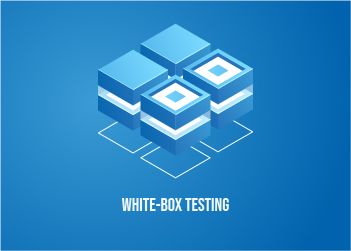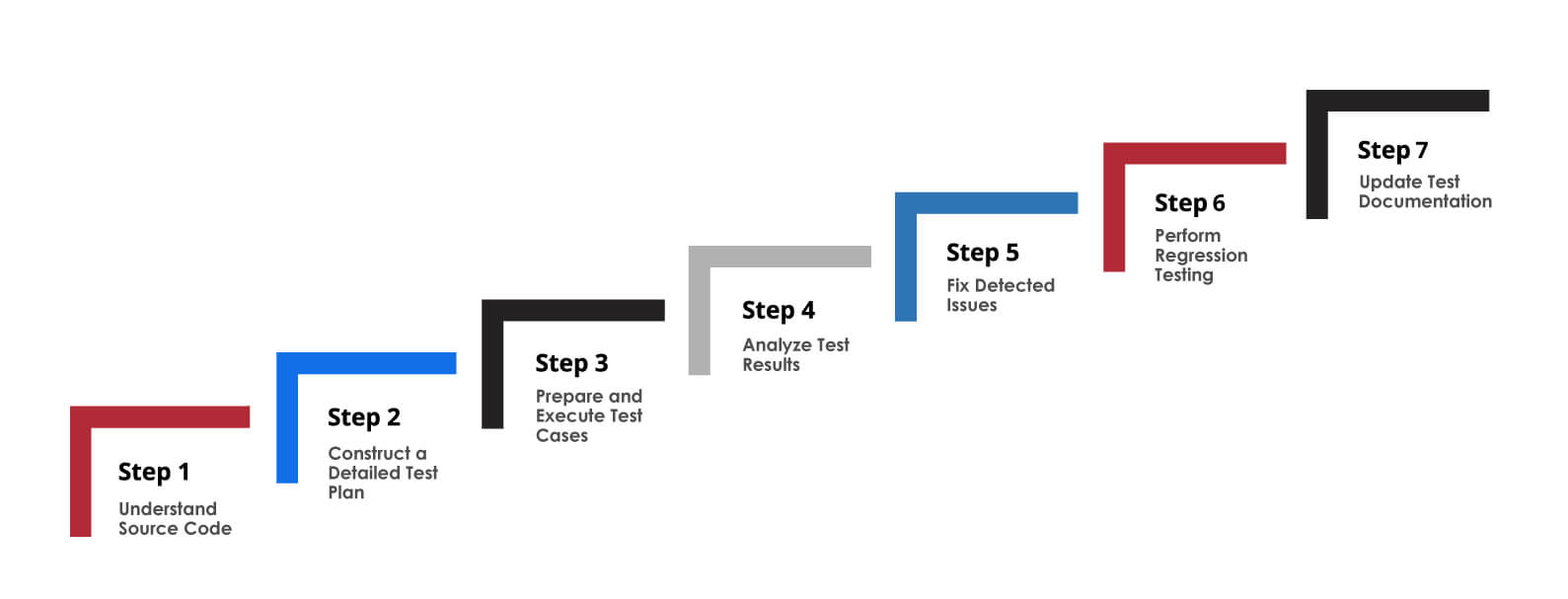
Do you know how software keeps its secrets safe? Why does some software perform seamlessly under load while others break down or crash? The answer is white box testing, which assures the robustness of their testing process. In today’s digital age, businesses are working smartly to identify the right software testing strategy and integrate it with the software development lifecycle. Experts say that the right approach often involves synchronizing different testing types to ensure businesses thoroughly test all the aspects of their software applications. Box testing, consisting of white-box and black-box testing, is crucial in software engineering (SE). It allows developers to peek inside the ‘box’ – the code – to ensure each area functions as expected.
According to a Consortium for IT Software Quality (CISQ) report, poor software quality resulted in operational losses of approximately $2.41 trillion in the US in 2022. It shows the critical importance of thorough software testing, making white box testing an indispensable asset in SE.
White Box Testing
White box testing, also known as glass box testing, structural testing, or clear box testing, is a software testing technique that allows QA engineers to examine and verify the internal operations of the product. In this technique, the tester knows the software’s internal structure, design, and implementation. It tests the code paths, configurations, and integrated interfaces to identify hidden defects and errors. One must have a deep understanding of the code when initiating white-box testing. Following are some of the key aspects of white box testing:

• QA engineers have complete visibility of software code, enabling them to create test cases covering all code loops, conditions, and branches.
• Path coverage helps detect untested areas of the program (which may contain bugs). It ensures every possible path throughout the code is tested and executed.
• Testers correctly process inputs and ensure that the outputs are as expected. This is necessary for functions involved in complex calculations or data transformations.
• It helps in testing interactions between integrated systems or units. Testers can simulate multiple scenarios and interactions by knowing the internal workings and ensuring all components work seamlessly.
• By looking into the code, testers can identify security vulnerabilities in the source code before deploying the software into production.
White box testing helps identify defects early in the SDLC and enhances the overall design and software maintenance procedure. By understanding and testing code thoroughly, dev and QA teams can optimize software performance efficiently and ensure it works seamlessly.
White Box Testing Types in Software Engineering
White box testing involves several techniques that uncover specific issues in the software code. Engineers can ensure comprehensive coverage by deploying various methods to enhance software reliability and performance. The following are some of the common types and techniques of white box testing:

Statement Coverage Testing
This technique tests every code line at least once. It allows testers to identify incorrect code, unused statements, dead code, and unused branches.
Functional Coverage Testing
This technique executes all code functions at least once. It ensures every function performs as expected under varying conditions.
Branch Coverage Testing
This technique ensures the execution of each possible branch from each decision point. It allows testers to validate every branch in the control structure, ensuring each loop and conditional construct are properly tested.
Path Testing
This testing type aims to execute all potential paths through the code. It covers all the possible paths, including nested conditions and loops.
Loop Testing
This type of testing specifically targets the loop construct validity and checks for the proper functioning of loops by varying the iteration count. It also tests scenarios at the boundaries, within the bounds, and beyond the bounds of loop conditions.
Data Flow Testing
In this, testers examine the data flow within the application, focusing on input data, processed data, and output data.
Condition Testing
This testing type focuses on evaluating the outcome of each Boolean expression as part of logical expressions. It ensures all conditions and possible outcomes are tested, a necessary aspect for complex decision-making within the code.
Unit Testing
Testers test the smallest piece of code in the system, known as unit, which are logically separated. Unit testing ensures ensure component performs as expected.
Mutation Testing
This testing type is based on alterations or mutations made to the source code. Testers analyze whether the test cases discover bugs in the code after new modifications, or not. If mutation testing succeeds, that means there’s a bug in the code.
Integration Testing
Testers check that the modules or components operate as intended and perform fine independently or when combined.
Penetration Testing
It is also known as oblique box or crystal pen testing that provides tester with complete system and network data (maps and passwords). It saves time and lowers overall engagement costs. Testers can simulate a specific attack on a given software by deploying multiple attack paths.
Role of White Box Testing in Software Engineering
White box testing in software engineering allows testers to enhance code quality and ensure system stability. It allows engineers to thoroughly inspect and evaluate code from within and provide a deeper understanding of the app’s functionality and logic. Such insight is necessary for identifying potential issues early in the SDLC, which saves time and reduces costs associated with post-deployment fixes. The following are some of the key roles of white box testing in software engineering:

• It enables dev teams to write cleaner and more maintainable code. They can identify and correct coding errors before deployment by deepening their understanding of the code structure.
• It allows the analysis of algorithm performance and code execution efficiency. Developers can identify and optimize slow or inefficient code lines, thus improving the app’s overall performance.
• The transparency of white box testing makes it easier to pinpoint the exact problem in case of test failure. It streamlines debugging by directly correlating code sections and test results.
• Testers can identify security vulnerabilities missed by black box testing by examining paths through the code. It includes checking buffer overflows, injection flaws, security threats, etc.
• It can easily be automated to run new tests every time changes are made to the codebase. This ensures new changes do not break existing functionality.
• It ensures that different parts of the app interact correctly with each other by testing the interface between units of code. This is valuable in complex systems where multiple units work together in sync.
Steps to Perform White Box Testing
The white box testing process in software engineering involves several stages, utilizing various tools and techniques to ensure thorough testing of the code. Following the steps below, the dev and testing teams can identify hidden errors, optimize performance, and enhance application security:

Step 1: Understand Source Code
Before initiating any testing type, engineers must comprehensively understand the app or software source code. It involves reviewing code to identify key variables, functions, and logic used throughout.
Step 2: Construct a Detailed Test Plan
Based on code knowledge, testers develop a test plan that includes specific test cases to cover all aspects of code functionality. The plan should include input details, execution conditions, and expected outcomes for each test case.
Step 3: Prepare and Execute Test Cases
Testers write and execute test cases, monitor software response, and compare it with expected outcomes. This step requires debugging tools to trace the code path execution and verify the logic.
Step 4: Analyze Test Results
The results are analyzed after testing to determine the test cases’ success rate. Any mismatch between expected and actual results will be flagged for further investigation.
Step 5: Fix Detected Issues
Issues uncovered during testing will be reported to the development team. They will make necessary code modifications to resolve those issues. It might also involve retesting the updated code to ensure the changes resolve the problems without introducing new ones.
Step 6: Perform Regression Testing
Once the bug-fixing process is completed, regression testing is performed to ensure that recent changes have no adverse effect on existing functionalities. This ensures software stability in the long run.
Step 7: Update Test Documentation
The last step is to update all test documentation to reflect the new findings and changes made during the testing process. It will serve as a valuable resource for future testing cycles and maintenance.
Latest White Box Testing Tools for 2024
With the rising complexities in software development, white box testing tools are essential for ensuring code quality and robustness. Following are some common white box testing tools used by testers and developers:

JUnit
Used in the testing framework for Java application development, JUnit allows developers to write and run repeatable tests. It ensures code changes do not break existing functionalities.
HTMLUnit
It is also known as a headless browser for testing web applications. HTMLUnit simulates a browser for testing JavaScript, forms, links, and web page structure.
PyUnit
This tool is known as unittest in Python’s standard library. It follows JUnit’s principles and supports sharing setup and shutdown code for tests, making it a valuable asset for testing Python applications.
Selenium
This tool automates browsers and is a powerful platform for performing tests on web applications. It supports multiple languages and browsers to facilitate complex web-based software testing.
CppUnit
It is a C++ port of JUnit designed for unit testing C+ applications. It allows developers to quickly build test suites to enhance the C++ development process.
EclEmma
This tool is a free Java code coverage tool that integrates directly with Eclipse. EclEmma provides feedback on coverage metrics, vital for understanding untested paths to ensure comprehensive test coverage.
Summary
White box testing is crucial in software engineering, ensuring applications are robust, secure, and efficient. Allowing testers and developers to examine internal code structures identifies and resolves errors early in the software development lifecycle (SDLC), enhancing code quality and system stability. Key techniques include testing statement, branch, and path coverage, ensuring comprehensive code analysis. Tools like JUnit, Selenium, and EclEmma support these efforts by facilitating thorough testing across various programming environments. Businesses should partner with a reliable QA provider like Tx to integrate these practices and tools to develop reliable, high-performing software applications as technology evolves.
Why Choose Tx for White Box Testing?
Selecting the right QA partner is crucial to ensuring the quality and security of software engineering projects. Tx is one of the leading white-box testing experts, offering a combination of advanced tools, an experienced tester pool, and a commitment to excellence. We aim to ensure your software meets the highest performance and reliability standards.

• We use advanced testing tools to handle the latest development environments and programming languages.
• Our testers specialize in various industry sectors, offering tailored white-box testing solutions to meet specific client needs.
• We cover every QA aspect, from basic functionality tests to complex security vulnerability assessments, ensuring comprehensive coverage and deep insights into potential issues.
• We utilize our in-house accelerators and customized testing strategies to align with your business goals and software code structure.
• We offer cost-effective testing solutions to optimize your QA process, reducing unnecessary expenses while maintaining quality and thoroughness.
To know more, contact our QA experts now.
Discover more
Get in Touch
Stay Updated
Subscribe for more info




